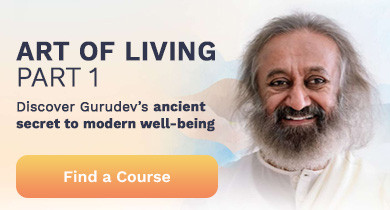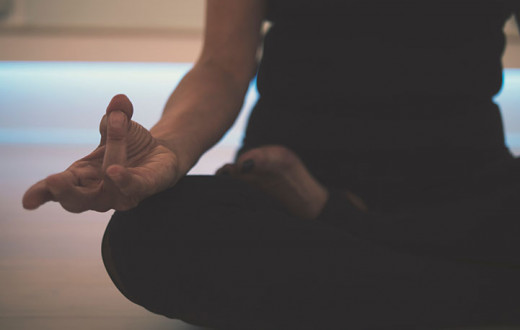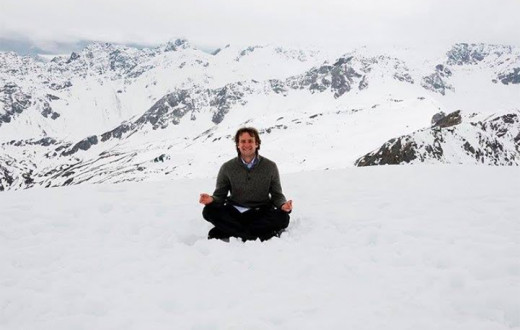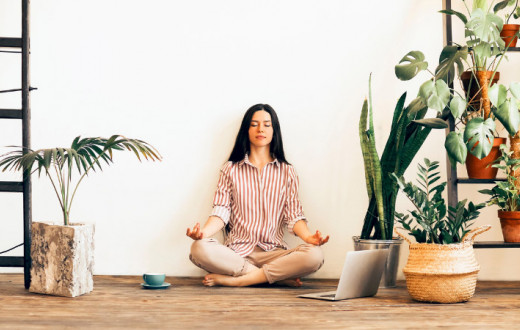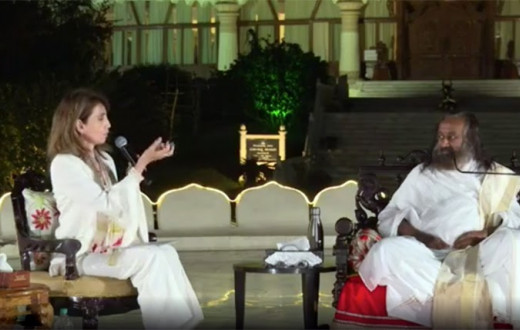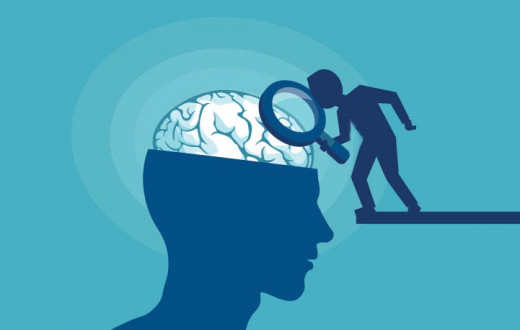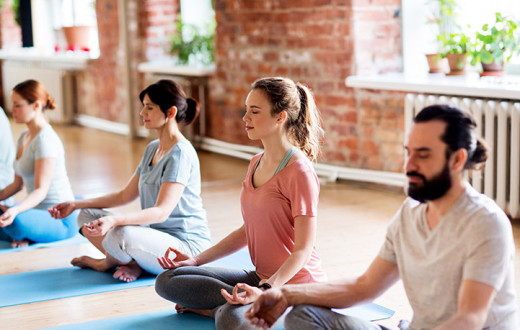
What is meditation?
Let’s get you started with our ultimate guide to meditation so you can quickly master the practice and begin experiencing all the benefits.
Firstly, the fewer concepts we have about what meditation should or shouldn’t be, the better our chance of having a successful meditation practice. For instance, expecting a thought-free meditation is not only counterproductive but also impossible.
That’s not to say that there couldn’t be periods where your thoughts are so quiet that it feels like you have no thoughts. And…after some time practicing meditation regularly, it is possible to experience meditation so deep that thoughts cease to exist briefly.
But what’s important to know is that meditation is a journey.
So, let’s look at what meditation is and what it isn’t.
Meditation is:
- The delicate and effortless art of doing nothing
- The skill to calm the mind and get in touch with your inner joy and the source of energy within us
- Deep rest and relaxation with alertness
- The journey from movement to stillness, from sound to silence
- Mind in the present moment
Meditation is not:
- Mental gymnastics
- Concentration
- Deep sleep
Ultimately, meditation simply means relaxing and reposing in your true nature. You could call it peace, love, or bliss. The key thing to understand is that relaxation is at the heart of meditation. To meditate, you must relax.
There are hundreds of different meditation practices out there, such as walking meditation, mantra meditation, and SKY Breath Meditation, and they are all intended to guide you to the same place: a state of complete relaxation, which, in turn, leads to stress reduction and a host of mental and physical health benefits.
Sounds good? It is!
Meditation is now the fastest-growing health trend in the USA, and it is estimated that over half a billion people worldwide practice meditation.
Experience Deep Relaxation Now
What are the benefits of meditation?
Everyone can benefit from a meditation practice. And for the skeptics out there, the meditation research shows this—a regular (i.e., daily!) meditation practice can significantly enhance your physiological and psychological state. It’s why millions of meditators worldwide use it as their ‘go-to’ well-being fix.
Here’s an overview of the benefits:
Physical health benefits of meditation
- Reduces stress and increases relaxation
- Improves overall health
- Boosts energy levels
- Strengthens immune system
- Healthier blood pressure
- Reduces addictive behaviors
Mental health benefits of meditation
- Greater clarity of mind and mental focus
- Enhances deep sleep
- Increases brain function
- Improves ability to manage challenging situations
- Boosts creativity
- Relieves depression
- Reduces anxiety
- Enhances optimism
- More ease and harmony in personal and work relationships
- Improves patience
- Increases confidence and self-esteem
Spiritual benefits of meditation
- Enhances yoga and meditation practices
- Increases inner peace
- Deeper connection with your inner self
- Increases compassion
However, the meditation technique you choose matters.
There’s a wide range of well-documented benefits to meditation. However, not all meditation techniques produce the same results—only a few have been rigorously researched, and SKY Breath Meditation (SKY) is one of them. It is a breathwork meditation practice that brings you into effortless (and deep) meditation—and is backed by science with over 100 independent studies.
Here are some of the science-backed benefits of SKY:
Meditation for stress
Stress has been shown to either cause or aggravate 80% of all diseases, so in terms of managing health—it’s vital to get this in check! Research shows that after just two weeks of practicing SKY, meditators had a 56% reduction in the stress hormone cortisol—with results from the very first session. SKY also lowers cholesterol and blood pressure—which we’ll explore below.
Meditation for anxiety and depression
The surge in mental health is at an all-time high. But there’s good news. From the very first SKY Breath Meditation session, research shows the well-being hormone prolactin begins to increase notably. And within one month, which is shorter than the average time for drug therapy, the studies show there is a 68 to 80% remission rate for both depression and anxiety. But will it work for you? Research has demonstrated that SKY provides a uniform rapid response among people who practice the technique. Whether it be emotion regulation or stress reduction, studies on SKY show that it works.
Meditation for improved sleep
Studies indicate that SKY significantly enhances deep sleep and combats two elements that damage sleep quality: stress and anxiety. Stress suppresses the sleep hormone melatonin, and SKY protects melatonin production by reducing the stress hormone cortisol. Plus, published research shows that people who practice SKY enjoy more youthful sleep and spend more time in the deeper stages of sleep than others their age. SKY provides an anti-aging, energizing boost!
Meditation for immune support
Natural Killer cells are the first line of defense in our immune system against foreign invaders, and research demonstrates that the number of Natural Killer cells produced by our immune system is considerably higher in people who practice SKY than in the population at large. Additionally, research showed lymphocyte count significantly increased in SKY practitioners, more than fivefold in just six weeks, compared with the control group, which suggests enhanced immune function.
Meditation for heart health
SKY lowers cholesterol, blood pressure, and cortisol levels—a boon for heart health! Independent research has shown that when healthy individuals practice SKY and those already suffering from hypertension (high blood pressure), there's a significant drop in heart rate and blood pressure in as little as 15 days. A recent study out of the University of Arizona/Harvard showed that SKY practitioners showed fewer cardiac signs of stress before a stressful event and observable reductions in anxiety and depression (more than other techniques such as mindfulness meditation), all impacting the heart.
Meditation for brain health
Imagine going through life with a sharp mental focus that surpasses that of medical researchers! This was seen in a study comparing SKY meditators to medical researchers and the effect of meditation on brain activity. They discovered the SKY participants had greater mental focus, indicated by an EEG, than the control group of medical doctors and researchers, and they also had an increase in alpha waves—found within the slow, relaxing meditative state. Additionally, SKY has been documented to increase the brain protein, brain-derived neurotrophic factor (BDNF), which is responsible for laying down new neurons and new brain cells.

Meditation for life satisfaction
A recent Yale study supported previous independent studies that showed SKY significantly increased those qualities that make life worth living—happiness, serenity, optimism, energy levels, social connection, and quality of life.
In conclusion, there are many practices out there, but if you want a specific technique that’s been scientifically validated to impact your mental and physical health positively, then it is worth exploring SKY Breath Meditation.
And remember, meditation is a practice. The benefits are cumulative and build with consistent, regular practice—that’s the key.
Start Your 7-Day Meditation Journey Now
Does meditation actually help?
The number of people meditating around the world has grown exponentially in recent years, and the figure is increasing daily.
The reason? Meditation helps us live a happier, healthier life.
With stress predominating the world we live in, the impact on our minds and bodies is prolific—it’s the number one cause of disease. And meditation can go a long way to support us in navigating the complexity of contemporary life.
From anxiety, depression, and stress reduction to improved sleep and immune function, smoking cessation, reduced blood pressure, enhanced brain health, chronic pain management, and more—meditation serves as a powerful mind-body tool for a diverse range of needs.
Choose a technique that works
It’s worth remembering that there are many techniques out there, and only some are backed by science. So, if you’re starting a meditation practice, you’ll want to know if it will give you the results you seek.
Over 100 scientific studies have shown that SKY Breath Meditation provides significant mind and body benefits. It’s practiced worldwide, and over 45 million people have benefited from it so far.
In this TEDx talk, Emma Seppälä, Ph.D., co-director of the Yale College Emotional Intelligence Project, shares her insights and research into this breath-based meditation technique.
Everyone can benefit from meditation, yet only those who cultivate a regular habit will experience the cumulative depth and breadth of those benefits—and see lasting positive change. Meditation is an ever-evolving journey; its gifts grow ever deeper with regular practice. An ad-hoc approach only gives you a tiny glimpse of what’s possible.
So, the best way to find out if meditation actually helps is to experience it yourself. Let’s dive right in and learn how to begin!
How to do meditation (how to start)
Firstly, let’s squish the idea of a yogi sitting in a contorted position perched high in the Himalayas!
Meditation is accessible to everyone. It’s simply a matter of finding a technique that works for you and a comfortable, seated position (unless, of course, it is a walking meditation!).

It’s helpful to first consider your motivation. Dig deep. What is it really? Remember it, as it holds the key to your powerful new habit.
Step 1: Find a technique you love
This is important. Actually, most important. When a meditation technique doesn’t sit right, you won’t be able to either. It simply has to resonate. Later, we’ll explore different types of meditation, and you can start from there!
Step 2: Pick a time
Once you’ve got your technique, choose a time. The morning is widely regarded as the best time to meditate—but if it’s not for you, pick a time that works for your schedule and stick to it daily. The body and mind are habitual creatures, and you will start to expect the practice, so you’ll naturally begin to settle, making it easier to sit and maintain a routine. Plus, your household will also become familiar with that time—it all helps!
Step 3: Find a quiet place
This will coincide with the time you choose. Pick a consistent time and place when you’ll be undisturbed, where you can relax, be quiet, and at ease. Make sure you’re comfortable, too. Otherwise, getting your mind to let go and relax will be quite a challenge. You can sit on a meditation cushion or a chair—just make sure you’re alert, or sleep will rear!
Step 4: Be consistent
As we’ve explored, meditation's benefits are cumulative. While some can be felt immediately, others grow and deepen over time. Daily (regular!) practice is key. Regularity trumps duration.
Step 5: Pause
Once you’ve been meditating for a few weeks, pause to reflect. What changes can you see in your life? Every positive change, however small, matters. Reflection is a BIG motivator.
Remember…
We always have a chance to begin again—each breath, moment, and day offers us this. So don’t worry if you miss a day. Just begin again and reaffirm your commitment, remember your motivation, and remind yourself of the benefits waiting for you—they will come, it is assured.
TIP: It can help to think of meditation as a form of hygiene—the mental equivalent of brushing your teeth. When you were young, you were taught to cultivate the habit of brushing your teeth. However, now that brushing is routine, the thought of not doing it is disgusting! The same goes for meditation—once you get into the habit and experience all of the mental clarity, emotional stability, stress reduction, physical relaxation, inner peace, etc., that a meditation practice offers, not practicing meditation seems unimaginable!
Experience Inner Stillness Now
Difference between meditation and mindfulness
While mindfulness and meditation are interrelated, they are not the same.
Both the terms are frequently used interchangeably and incorrectly, and sometimes, in the most simplified way, most often refer to the same general thing—calming a busy mind.
The differences between mindfulness and meditation have been debated and interpreted in many ways. They very often overlap. At the same time, each has its own specific definition and purpose. So, a basic understanding of the differences between these two concepts is necessary. This can help you carve out a practice that meets your needs.
Let’s get more clarity!
What is mindfulness?
According to mindful.org, “Mindfulness is the basic human ability to be fully present, aware of where we are and what we’re doing, and not overly reactive or overwhelmed by what’s happening around us.”
While we all naturally possess mindfulness, it becomes more readily available when we practice it daily.
Whenever you bring awareness to what you’re directly experiencing via your senses or to your state of mind via your thoughts and emotions, you’re being mindful. And there’s growing research showing that when you train your brain to be mindful, you’re actually remodeling the physical structure of your brain.
The goal of mindfulness is to become aware of the inner workings of our mental, emotional, and physical processes.
What is meditation?
As we explored earlier and perfectly expressed by Gurudev, world-renowned spiritual teacher and meditation master, “meditation is the delicate and effortless art of doing nothing. It is the skill to take a deep rest while being conscious and alert. Beyond all the chatter and noise in our mind, there is a silent, peaceful, blissful, beautiful space that exists in all of us, a place that is intact and unbroken. Turning our attention to this silent chamber is meditation. This silence cleanses the mind, giving it a much-needed rest, and makes room for better perceptions and new ways of looking at life and its challenges.”
Meditation is tapping into a naturally occurring state of mind or consciousness. Vast research studies have backed its positive impact on the brain, heart, and the whole body-mind complex.
The goal of meditation is to let go of all the goals for the time being and just relax into your natural self.
History: The origins of mindfulness and meditation
The roots of these practices are different. Mindfulness originated in the Buddhist tradition and was popularized in the West by teachers such as Jon Kabat-Zinn, Pema Chodron, and Thich Nhat-Hanh. Meditation originated in the Vedic and yogic traditions in India and is related to Hinduism, dating from 1700-1100 BCE. Later on, different forms of meditation began developing in Buddhism and Taoism, mainly in India and China. It was brought to the West by Vivekananda, Maharishi Mahesh Yogi, Gurudev, Deepak Chopra, and many other respected meditation teachers.
After being introduced to the West in the 20th century, meditation has been realigned and categorized to match the goals of modern, secular society—and it became a proven way to reduce stress, anxiety, and chronic pain and improve your overall physical and mental health.
As meditation evolved, it has become a large umbrella term that encompasses the practice of reaching ultimate consciousness, transcending the mind, improving concentration, acknowledging the mind, and, in a way, self-regulating it. It can involve a lot of techniques or practices to reach this heightened level of consciousness—including compassion, love, patience, and of course, mindfulness. So mindfulness is now known as a type of meditation, alongside mantra, tantra, silence, breathwork, and emptiness. But mindfulness by itself is not a substitute for meditation.
Mindfulness and meditation have many benefits, and many overlap regarding your physical and mental health. Improved mindfulness is one of the major benefits of meditation. If you aim to improve your self-awareness, mindfulness and meditation can be helpful. Yet meditation offers an added experience of a profound state of stillness and bliss, the self-transcendence! This gives such a deep rest to the mind, even deeper than deep sleep. This rest is what your frenzied mind is seeking. Gurudev often says that mindfulness is a doorway to meditation. While mindfulness brings you to the door of your home, meditation brings you home.
As you can see, mindfulness is not a replacement for meditation. If you are meditating, you will become more mindful in all aspects of your life. However, just the practice of mindfulness may not give you the deeply profound experience that meditation offers.
Types of meditation
Let’s take a look at meditation techniques and explore meditation to support sleep, ease anxiety, and other aspects of well-being.
Meditation Techniques
Some meditation techniques come from ancient traditions, while others are newfangled, modern-day spin-offs.
For beginners, whatever technique you choose, it’s always best to learn from a qualified teacher who can guide you every step of the way. It helps remove any confusion and sets you on the path to the most beneficial, rewarding meditation experience—and that’s the most important thing!
Here’s a breakdown of the various types of meditation for beginners.
Mantra-based meditation
Two mantra-based meditation techniques with roots in ancient traditions are transcendental meditation and Sahaj Samadhi (effortless bliss) meditation. Both of these techniques use a Sanskrit sound, a mantra that acts as a conduit, guiding you through mental clutter into a state of serene repose.
Guided meditation
Though this type of meditation has existed for thousands of years, guided meditations are often the go-to method for newbies. One reason guided meditations are so popular is that they can temporarily relieve anxiety, stress, sleep issues, and more without learning a meditation technique.
Mindfulness meditation
Known as a more challenging method of meditation, mindfulness meditation is believed to have started about 2500 years ago with Buddhism. Today, some meditation masters believe that mindfulness is more easily attained as a benefit due to long-term meditation practice.
Breath-based meditation
SKY Breath Meditation is by far the most popular breath-based meditation, with more than 45 million practitioners worldwide. With research to back up the popularity, SKY is a technique that anyone can easily practice and enjoy numerous benefits.
Overall, a meditation practice of any kind can provide benefits. However, people are increasingly interested in meditation to support specific aspects of well-being, which we’ll explore here—including how to support their kids.
Meditation & well-being
Meditation for sleep
Meditation can not only help you recover from issues arising from a lack of sleep, but it can also make it easier to fall asleep. One of the main causes of sleeplessness is stress, and one of the main benefits of meditation is releasing stress.
Depending on which meditation technique you use, there could also be the added benefit of resetting or balancing your internal rhythms, which in turn makes it easier to fall asleep on time. Being in harmony with the natural rhythms in nature is an added benefit of the breath-based meditation technique known as SKY Breath Meditation.
Also, guided meditation has become a common go-to for anyone with sleep issues. It’s quick. It’s easy. And they help in the short term. You can access guided meditations online and in a meditation app (try the Art of Living Journey app). Here’s one guided meditation by Gurudev that you can use to get better sleep.
You could also try a body scan meditation. It’s very similar to guided meditation but is most often done while lying flat on your back. Yoga Nidra, also known as Yogic Sleep, is a great one—it's a way to gain deep rest while still being awake. It can be used to recover from a sleepless night, a power nap during an afternoon slump, or at the end of any series of yoga postures. It can even be used in bed at night as a tool for falling asleep, though that is not its original intended purpose.
How long does it take to see results? You can see some results very quickly, but it will also depend on which meditation technique you utilize. With SKY Breath Meditation and Sahaj Samadhi Meditation, the benefits compound and increase over time.
Meditation for anxiety
Guided meditation is an excellent tool for stress reduction and anxiety relief. Regardless of where you find yourself on the anxiety spectrum, guided meditation is an easy first step on your path to greater calm.
What makes guided meditation great for dealing with anxiety? You basically hand over the reins of your anxious thoughts to the calm voice guiding you gently into a space where you can breathe and let go! Nothing to do; just close your eyes and enjoy each moment of more and more relaxation.
Plus, a great technique to learn is SKY Breath Meditation—practitioners experience a significant decrease in clinical and non-clinical anxiety and depression. SKY also reduces PTSD and addictive behaviors as well as enhances deep sleep.
Meditation for kids
Children enter the world residing in their true nature—of love, joy, spontaneity, curiosity, and playfulness—the very nature we, as adults, wish to reconnect to through meditation! So, for young children, meditation master Gurudev recommends that we do not force kids to meditate; simply allow them to play and sing.
Typically, from age nine onwards, you can start introducing meditation or forms of practice geared toward their level of understanding. A meditation practice supports children and teens in many ways, such as helping a restless child focus, a nervous child feel calmer and more self-confident, and help teens regulate the rollercoaster of emotions and stress.
Before a meditation practice, it is important that children engage in physical exercise. Encourage them to play sports, do yoga postures, or even animal yoga. This will help them utilize their physical energy and help them be less restless. You will find them ready and willing to listen and sit in one place when they are tired.
Breathing exercises are as good as meditation for 9-12-year-olds. When starting out, the keyword is ‘short’—five to eight minutes. You will find that short practices for kids are easier and more effective.
You can try a guided meditation for 13 to 18-year-olds who are ready for slightly longer sessions.
Meditation for healing
Relaxation is a core prerequisite to healing. If the mind and body are stressed, the sympathetic nervous system (fight or flight) is activated, switching the body's vital systems away from supporting our overall health and well-being. When the body and mind are relaxed, our parasympathetic nervous system (rest and digest) is activated, creating conditions for our whole being to function optimally—and heal.
Stress reduction is a foundational benefit of meditation. The practice can support many areas of our well-being, from managing chronic pain to grief.
Ultimately, if we can be calm in mind and body, it sets the stage for mental, physical, and emotional healing to take place.
JOIN SECRETS OF MEDITATION NOW
Meditation for depression
There is real evidence to support the effectiveness of meditation in improving symptoms of depression, changing your response to negative thoughts, enhancing your ability to manage your depression long-term, and preventing depression relapses.
Check out this video for a specific practice shown to reduce depression.
Meditation for anger
Anger comes in many forms, from irritation and frustration to fury and rage. Beneath it all is the mind. Meditation can help diffuse inner heightened feelings, reduce reactivity, and help us respond from a calmer place inside.
Breathing techniques and meditation are very effective in calming the mind. For every rhythm in the mind, there is a corresponding rhythm in the breath, and for every rhythm in the breath, there is a corresponding emotion. So, by changing our breath, we can change how we feel.
Therefore, breath-based meditation is a powerful practice to learn. One in particular, SKY Breath Meditation, has been shown to help regulate emotions.
How to benefit from meditation classes
As you set out on your meditation adventure, attending a meditation class and learning from an expert will be one of the best things you can do!
A meditation expert can take you from having little to no experience to mastering the art of meditation.
Managing our minds takes a special skill, especially during meditation. Without the support and guidance of an experienced, trained meditation instructor, you could find yourself struggling to attain the long sought-after experience of ‘nirvana,’ let alone the more common benefits of a meditation practice, like reduced anxiety, enhanced cardiovascular function, and improved relationships.
As a beginner, being able to meditate in a class setting not only gives you more experience, but it also brings the benefit of others’ ‘good energy.’ Yoga International cites “the unified field superstring theory in physics, waves of vibration flow from everything in the universe affecting the collective consciousness. Groups have the power to enliven that field”. Interestingly, the group meditation dynamic isn’t lost when meditators unite virtually across great distances.
In a meditation class, you’ll benefit from:
- Expert guidance from an experienced teacher
- Supportive, structured format
- Connection with a like-minded community
- Dedicated time & space from distractions
- Amplified benefits from a shared group experience
To fully benefit from a meditation class, you’ll want to find a certified meditation instructor, so you know you’re in expert hands. Look for a well-established organization that fully trains its teachers, such as the Art of Living. This organization leads the way in meditation, offering in-person and online courses and retreats for you to learn evidence-based techniques with ongoing support and community to help you grow and flourish with your new meditation habit!
Register for the Art of Living Part 1 course today and experience SKY Breath Meditation for yourself.


